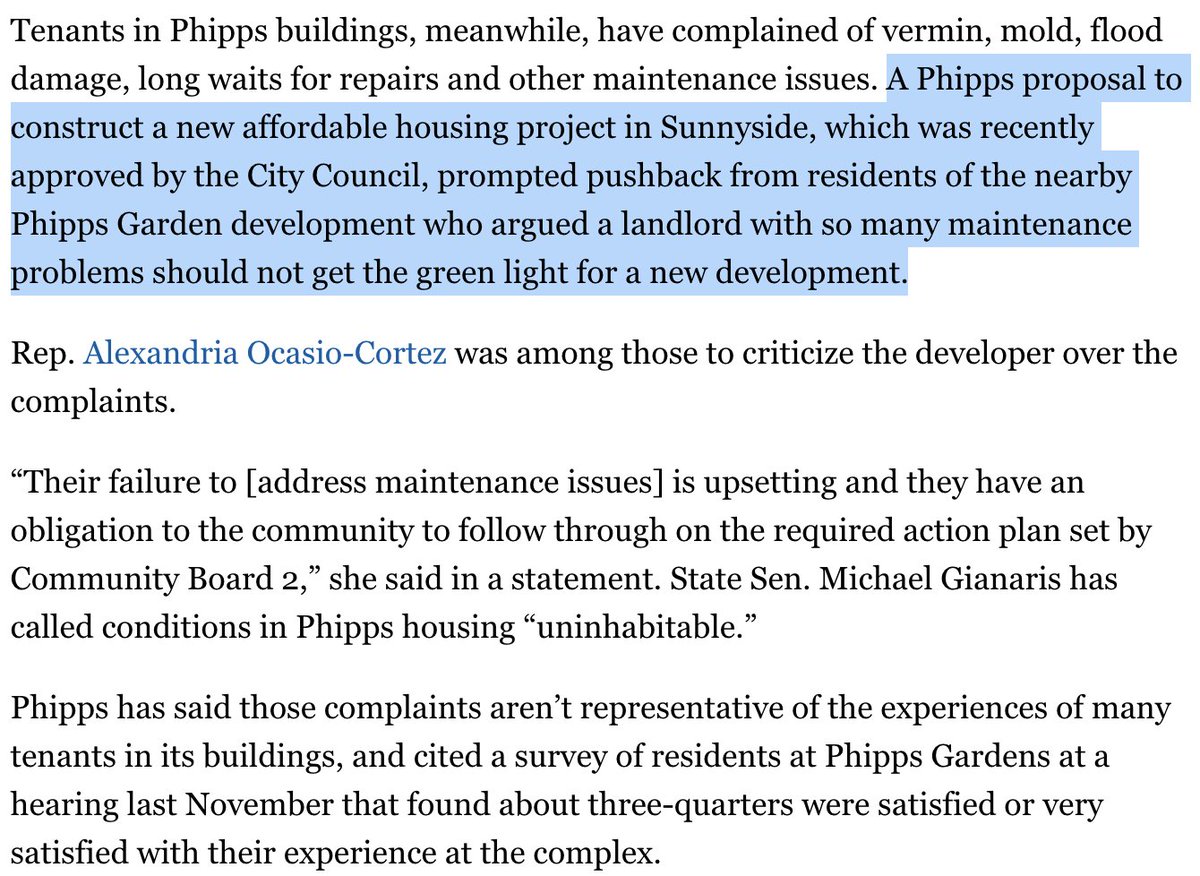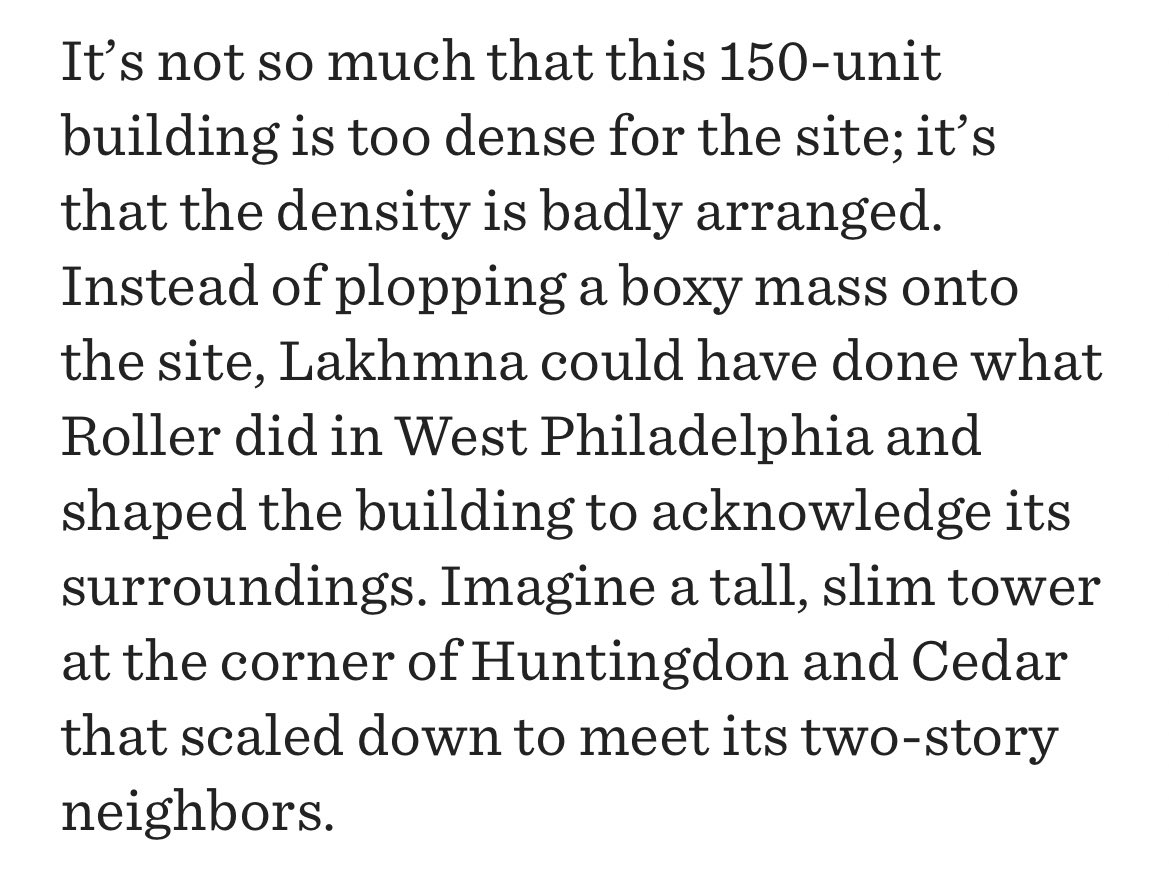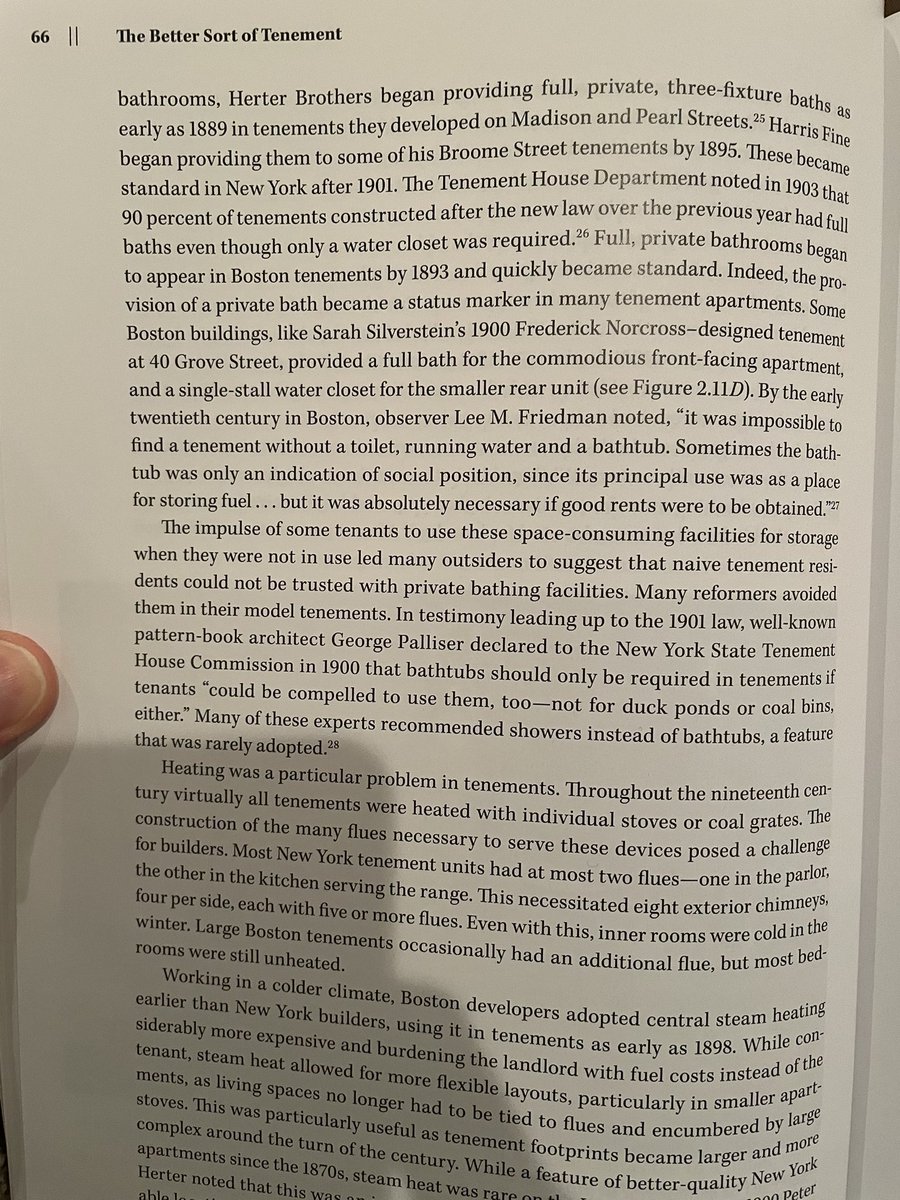
This struck me early on. But rather than accepting the premise than working for Phipps is a black mark, I'd reframe and say that the NYC left is so anti-housing that they can't even support the city's oldest nonprofit affordable housing developer
https://twitter.com/SallyGold/status/1384589814272569356
For example, the Sunnyside Gardens rejection. The local council member SAID he was opposed because of Phipps's reputation...but then once Phipps added parking and cut the density and he got on board, despite their reputation remaining unchanged. So what was it really about? 🤔 

Then there's the worst evictors list. What is a non-profit supposed to do with tenants who don't pay the rent? It's not market rate housing – a tenant being evicted is all downside to them. They have no incentive to evict unfairly 

While #1 on that worst evictors list is Ved Parkash, that's only because the people who compiled it decided not to rank the NYC Housing Authority, which ousted more tenants than anybody on the list, by a lot. But that's inevitable when you are the city's largest landlord 



The bottom line is that the New York City left doesn't have the stomach to actually build or operate affordable housing. They are dreamers and regulators, not builders and operators
Oct. 2020 is when I first noticed Morales doing this. Note also that the moderator exaggerated – they were 11th on the list (12th if NYCHA had been ranked), and it was ordered by absolute, not relative, evictions. Mainly they just run a lot of housing! worstevictorsnyc.org/evictors-list/…
https://twitter.com/MarketUrbanism/status/1316165724788883456
• • •
Missing some Tweet in this thread? You can try to
force a refresh









